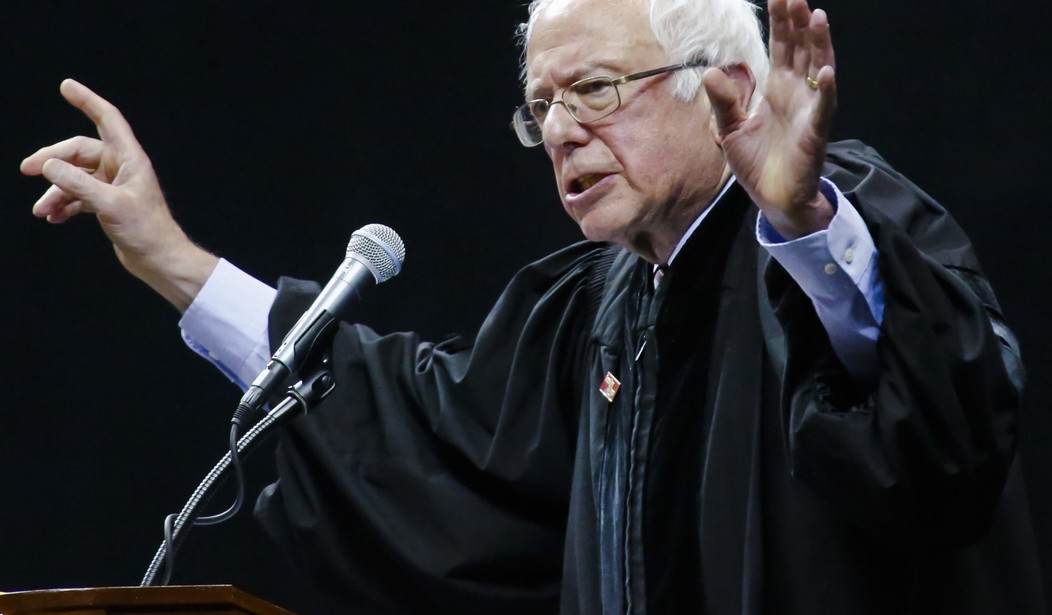Who ever imagined that the Democrat Party would move so far let that their main selling point would be “socialism”? With the leading candidate for Democrat nominee for president and the most influential junior member of the House declaring themselves “democratic socialists”—as if the modifier “democratic” was ever honored in socialist regimes—and most Democrat candidates for president supporting similar policies as the self-declared socialists, this is not President Clinton’s or even President Obama’s Democrat Party. The Democrat Party has not only congregated in far left field, but half of the party has also climbed over the fence.
According to a Rasmussen poll reported on 27 February 2020, “45% of Democrats have a favorable view of socialism.” Of all voters, “eighteen percent (18%) believe the individual has more power” than the government under socialism. (Breakdown by party is not specified, but it seems likely that most are Democrat.) According to a Pew poll reported on 25 June 2019, 65% of Democrats and voters who lean Democrat have a favorable attitude toward socialism.
How did this newfound love for socialism come about? Just as with a disease pandemic we search for the origin of the disease, so too with an ideological pandemic, we need to know the origin of this ideological transformation. As it turns out, the origin of our socialist epidemic is clear. According to Ned Ryun, “The Left’s long march through our educational system, which has resulted in deep dishonesty about socialism and Communism and indoctrinated generations with socialist ideas and a loathing of America, set the stage for Sanders.” Let us explore in more detail what happened in our universities and then in our schools.
The leftist transformation of education in America began with the counterculture of the 1960s which rejected wholesale the values and institutions of modern America, replacing them with getting high, dropping out, returning to subsistence agriculture, and commune living — in short, anything contrary to the status quo. As the years went by, many, disillusioned with poverty and social chaos but not having lost their distaste for America, returned to education, some eventually becoming teachers and professors. The counterculture rejection of America became the theoretical debunking of America through the adoption of revolutionary Marxism in its many varieties, Leninist, Stalinist, Trotskyist, Maoist, and its many heroes, such Mao, Che Guevara, and Ho Chi Min. Thus, through the second half of the 20th century, professional organizations of anthropologists, sociologists, political scientists had Marxist sections and regular Marxist sessions at their annual conventions.
However, orthodox Marxism, which claims that capitalist society is characterized by a wealthy, capital-owning bourgeois oppressing and exploiting a subservient proletarian working class, never had much attraction for Americans generally, who saw themselves as middle class and appreciated the prosperity and opportunity in America. The orthodox vision of Marxism with its conflict between economic classes never conquered the liberal vision of free citizens associating by choice and using their initiative and talents to gain success.
The great challenge to liberalism, and the new champion of a neo-Marxist vision of a class-based society, came from feminism, the second wave of the 1960s through the fourth wave of the 21st century. The class struggle was no longer seen as between economic classes, but between gender classes, with males manning the “patriarchy” and oppressing blameless female victims. Feminists dedicated themselves to overthrowing the patriarchy, and despite claims of wishing to advance “equality,” aimed to displace males and advantage females. This gender class-conflict model was adopted as the central truth of feminist professors in women’s studies, sociology, anthropology, political science, “cultural studies,” education, social work, law, and throughout colleges and universities. Females widely accepted the feminist vision, as did many males anxious as always to gain favor from the females.
The feminist movement gained great success. Throughout America’s institutions, females were given preference and special benefits, so that by the 21st century, females dominated some spheres, such as the schools, colleges, and universities, and the legal profession. Males only outstrip females in the hours, days, weeks, months, and years worked, as well as, by a vast difference, those injured or killed in work-related accidents. For some feminists, all of this is not enough; they demand that males “step back” from leadership and power, turning all institutions over to females.
The feminist identity class-conflict model was adopted by other categories of people to advance their interests. LGBTQ++ framed their demands in terms of their oppression and victimization by heterosexuals who formed the superordinate class. They too demanded “equality,” but have been celebrated and given preference in the name of “diversity and inclusion.” Race activists adopted the identity class model, arguing that America is a thoroughly racist society that has victimized African Americans, Hispanics, Asians, Native Americans, and others. American institutions responded by giving members of racial and ethnic categories claiming victim status and marginalization special preference and benefits, under programs such as “affirmative action” (which, when first launched by President Kennedy, forbade racial preferences). Racial activists often characterized members of the “oppressive” class of whites as evil.
The new criterion of “representation” of categories of people in the same percentages as in the general public became the measure to which all institutions were held. If some categories of people were “underrepresented,” it was deemed by advocates and activists proof that the “underrepresentation” was the result of discrimination, alternative explanations being disregarded. Under the increasingly coercive regulations and laws supporting “diversity and inclusion,” any membership less than 50% females, 14% African American, 16% Hispanic, and so on, was regarded as sexist and racist exclusion. Other criteria for recruitment, such as past achievement, merit, excellence, and potential, were set aside as allegedly being “white male supremacist” talking points, and people were recruited on gender, racial, ethnic, sexuality grounds to insure statistical “representation” and “diversity and inclusion,” the new criteria that trumped all others. Needless to say, in terms of functionality, weak candidates were accepted, and strong candidates turned away on the basis of the new criteria. The label for these criteria and selections is, ironically, “social justice.”
At the same time as the identity class-conflict model displaced the liberal model of free individuals, the basis of knowledge, research, scholarship, and the search for truth was undermined in colleges and universities by a new set of European ideas called “postmodernism.” This nihilistic epistemology argued that everything is subjective, so no objective truth could ever be established or maintained. Feminists adopted this rationale for subjectivity with enthusiasm, claiming that only they could understand who they are and what they need. Some ethnic activists among professors invented new histories to show the superiority of their groups. The result of “postmodernism” was to negate the traditional search for truth and the value of objective knowledge. With truth and knowledge out of the way, all that was left for “higher education” was advocacy for the “subaltern,” oppressed, and marginalized, so political advocacy replaced scholarship and professors became not seekers of truth, but advocates of preferred categories of people. The question was no longer what you know, but whose side you are on.
Orthodox Marxist-Leninism did not disappear entirely. It was resurrected when it served to advance the interests of oppressed and marginalized minorities. Among professors of anthropology, political science, international studies, geography, and the like, “postcolonial theory” was adopted as the central theory of international relations. Following Leninism’s argument that the capitalist class struggle was exported to third-world countries through imperialism and colonialism, “postcolonial theory” tried to explain the weakness, corruption, and violence of newly independent third-world countries by their previous colonial status. The main point of this theory is to blame Europe and America, the West, for any and all ills in the world. The world before Western imperialism is anti-historically portrayed as peaceful, loving, and productive, this wonderful Eden transformed and destroyed by the evil West. The world is, according to this theory, an example of class conflict writ large, with the West as the oppressors and the rest as blameless victims of the West’s depredations. This vision is one of the rationales of the open border policy so beloved by the Democrat Party, the flooding of America by non-whites and minority ethnics in order to erase the racial and economic class oppression of the past and present.
The upshot of the ideological transformation of colleges and universities is that the identity class-conflict model of America has been widely accepted as the true picture. And although Americans in the past had not identified as proletarian members of the working class, having adopted the identity class conflict model, they increasingly accept the orthodox Marxist economic class-conflict model, as consistent with their class-conflict worldview. The orthodox Marxist solution to class conflict and oppression is socialism, which has been adopted by a large part of the Democrat Party and is the explicit objective of some leaders of the party.
It is worth keeping in mind that all of our college and university graduates of the past fifty years have been indoctrinated with identity class conflict theory and the sexism and racism that it claims to be the main attributes of America. Our education graduates have entered the school system where they spread the ideology that they learned in university to the pupils that they are supposed to educate. Other graduates enter the civil service bureaucracy, aiming to direct their actions to advance “social justice” in spite of its exclusionary injustices. Graduates have transformed business and industry, applying criteria of “diversity and inclusion” in place of merit and potential. And, of course, our elected officials, infected with the same ideology, act to legislate their Marxist vision and their “social justice” goals into law.
It is no mystery where America’s newfound and counterfactual enthusiasm for socialism has come from. It has come from the ideological infection that is pandemic in our educational system.









Join the conversation as a VIP Member